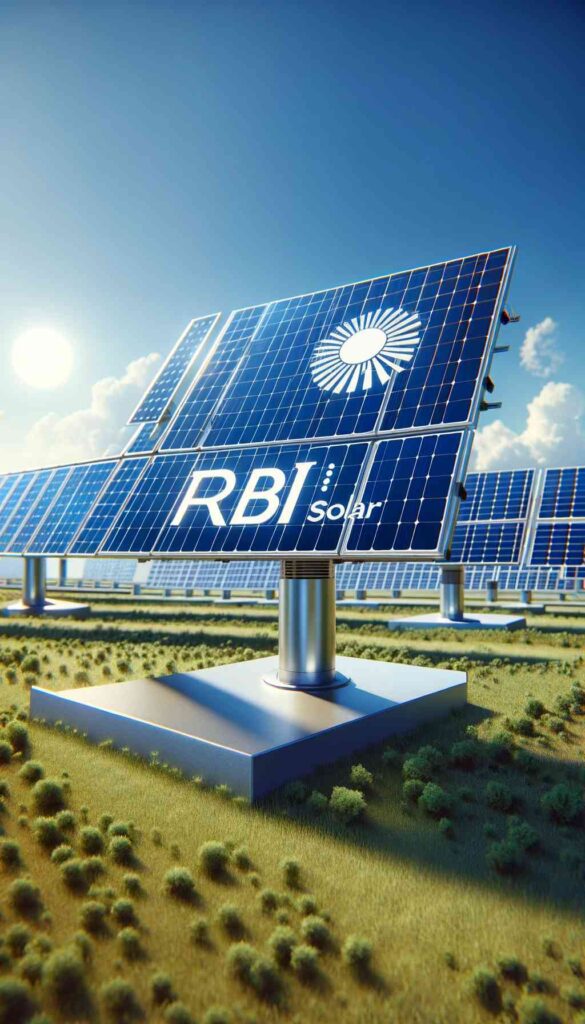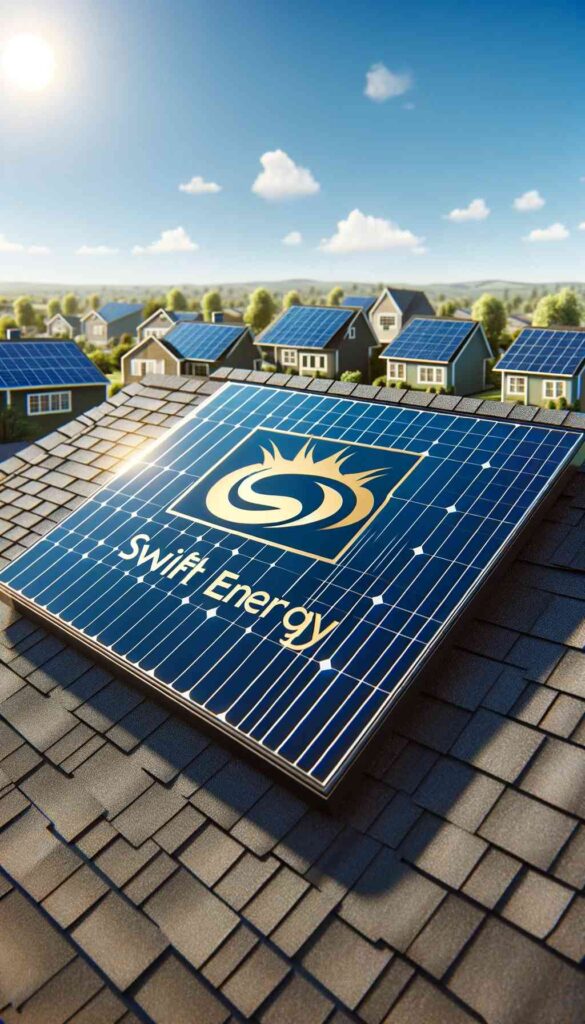
Key Takeaways
- Solar storage solutions allow you to harness solar energy during the day and use it at night or during power outages.
- Understanding your home’s energy needs is crucial in choosing the right solar battery system.
- There are different types of solar batteries, each with their own advantages, suited to various household requirements.
- Maximizing the efficiency of solar storage involves managing energy consumption and taking advantage of incentives.
Harnessing the Sun: Solar Storage for Uninterrupted Power
Imagine a world where your home is powered day and night by the sun, a clean and endless source of energy. With solar storage solutions, this is not just a dream but a very real possibility. By capturing solar energy during the day and storing it for use whenever needed, solar storage ensures that your home can remain powered 24/7, regardless of the availability of sunlight or the state of the grid.
What Solar Storage Means for Your Home
Think of solar storage as your personal energy reservoir. Just like a water tank stores water, a solar battery stores electricity. This means that even when the sun sets, or on cloudy days, you can still use solar energy. It’s a game-changer for homeowners who want to lower their carbon footprint and say goodbye to the unpredictability of traditional energy sources.
The Role of Solar Storage in Energy Independence
Energy independence is not just a buzzword; it’s about having control over your power supply. With solar storage, you’re not at the mercy of power outages or fluctuating energy prices. You generate your own electricity, store it, and use it on your own terms. This independence is empowering and, most importantly, sustainable for our planet.
Understanding Solar Storage Technology
Before diving into the world of solar batteries, it’s essential to grasp the basics. Solar panels convert sunlight into electricity, which is then either used immediately, fed back into the grid, or stored in batteries for later use. The stored energy can power your home at night, during peak utility rates, or during a power outage, making it a versatile and valuable addition to your home energy system.
The Basics of Solar Battery Systems
Solar batteries work by storing excess energy produced by your solar panels. But not all batteries are created equal. They vary in capacity, lifespan, and cost. When considering a solar battery, think about how much energy your household uses, especially during peak hours or in emergencies. This will help you determine the size and capacity of the battery you’ll need.
How Solar Panels and Batteries Work Together
It’s like a dance between the sun, your solar panels, and your batteries. During the day, solar panels soak up the sun’s rays and convert them into electricity. If your home doesn’t use all the electricity right away, the surplus gets stored in the batteries. Then, when the sun goes down, your home can draw on this stored energy, keeping your lights on and your devices charged.
Evaluating Your Household Energy Needs
Before jumping into solar storage, it’s essential to understand your household’s energy consumption. Start by looking at your energy bills to see how much electricity you use monthly. Pay attention to peak usage times, as these are when you’ll benefit most from solar storage. Consider the energy demands of your appliances, heating and cooling systems, and any other significant power users in your home. This will give you a clear picture of the battery capacity required to meet your needs.
Analyzing Different Types of Solar Batteries
There are several types of solar batteries to choose from, each with their own set of benefits. The most common include:
- Lithium-ion: Known for their high efficiency and long lifespan, they are a popular choice for residential solar storage.
- Lead-acid: These are more affordable but have a shorter lifespan and require regular maintenance.
- Saltwater: A newer type, these batteries are environmentally friendly and do not contain heavy metals, but are less energy-dense.
When selecting a battery, consider factors like cost, capacity, lifespan, and environmental impact. This will ensure you choose a battery that aligns with your energy needs and values.
DC-Coupled vs AC-Coupled Storage Solutions
There are two main types of solar storage solutions: DC-coupled and AC-coupled. DC-coupled systems are more efficient as they store power directly from the solar panels without converting it to AC, reducing energy loss. AC-coupled systems, on the other hand, are versatile and can be easily added to existing solar installations. They convert solar power to AC before storing it, which can be less efficient but offers more flexibility in system design.
Choosing between the two depends on factors like the specifics of your solar panel setup, your energy needs, and whether you’re installing a new system or retrofitting an existing one. It’s a decision that can impact the overall efficiency and cost-effectiveness of your solar storage system.

Maximizing Your Solar Storage Investment
To get the most out of your solar storage, it’s not just about the technology; it’s also about how you use it. Smart energy habits, such as using high-energy appliances during the day when your solar panels are producing the most electricity, can help you maximize your storage. Consider also investing in energy-efficient appliances and LED lighting to reduce your overall energy consumption.
Strategies for Efficient Energy Use
Efficient energy use is key to maximizing your solar storage. Here are some strategies to consider:
- Use appliances like washing machines and dishwashers during the day when solar production is high.
- Install a programmable thermostat to manage heating and cooling more effectively.
- Invest in smart home devices that can help you monitor and control energy usage.
By aligning your energy consumption with your solar production, you’ll make the best use of your stored energy and reduce reliance on the grid.
Navigating Incentives and Tax Credits
Financial incentives can significantly offset the cost of your solar storage system. Many governments offer tax credits, rebates, and other incentives to encourage the adoption of solar energy. For instance, in the United States, the federal solar tax credit allows you to deduct a percentage of the cost of installing a solar energy system from your federal taxes. Some states and local utilities also offer their own incentives. It’s worth researching what’s available in your area to reduce the initial investment of going solar.
Final Thoughts
In conclusion, solar storage solutions offer a sustainable and cost-effective way to ensure your home has a reliable power supply. By integrating solar storage into your energy system, you can store excess solar energy generated during the day for use at night or during cloudy periods, ensuring a continuous power supply. Understanding your energy needs is essential in determining the appropriate size and type of battery storage system for your home.
Selecting the right battery, whether it’s a lithium-ion, lead-acid, or another type, is essential for maximizing efficiency and longevity. Adopting efficient energy habits, such as using energy-intensive appliances during peak solar production hours and reducing overall energy consumption, can also further enhance the benefits of your solar storage system. With these strategies, you can optimize your solar energy use, reduce reliance on the grid, and enjoy the financial and environmental benefits of solar power around the clock.

Frequently Asked Questions (FAQ)
How Long Will a Solar Battery Power My Home?
The duration a solar battery will power your home depends on the battery’s capacity and your home’s energy usage. For example, if you have a 10 kWh battery and your home uses 2 kWh per hour, your battery could theoretically power your home for about 5 hours. However, it’s important to note that you’ll likely be using less energy during certain hours, and some systems may not be designed to use 100% of their capacity, to preserve battery life.
Can Solar Storage Systems Work During Grid Outages?
Absolutely! One of the greatest advantages of having a solar storage system is its ability to provide power during grid outages. If the grid goes down, your solar battery system can disconnect from the grid and continue to power your home independently. This is especially valuable in areas prone to power outages due to extreme weather or other disruptions.
What Is the Lifespan of a Solar Battery?
The lifespan of a solar battery typically ranges from 5 to 15 years, depending on the type of battery, the brand, and how the battery is used and maintained. Lithium-ion batteries often have a longer lifespan compared to lead-acid batteries. To ensure the longest life possible, follow the manufacturer’s guidelines for use and maintenance.
Are There Maintenance Requirements for Solar Batteries?
Yes, solar batteries do require some maintenance to ensure optimal performance and longevity. The maintenance varies by the type of battery. For example, lead-acid batteries require regular checks for water levels and terminal cleaning to prevent corrosion, while lithium-ion batteries are virtually maintenance-free. Always refer to your battery’s user manual for specific maintenance recommendations.
How Do Solar Storage Costs Compare to Traditional Energy Sources?
While the initial cost of a solar storage system can be higher than sticking with traditional energy sources, the long-term savings are substantial. Solar storage allows you to use more of the energy you produce, reducing your reliance on the grid and protecting you from rising energy costs. Plus, with government incentives and the potential increase in your property’s value, solar storage is a wise investment for the future.
- Initial costs: $5,000-$15,000 for a solar battery system, depending on capacity and brand.
- Long-term savings: Can significantly reduce or even eliminate electricity bills over time.
- Incentives: Federal tax credits and local rebates can lower the overall investment cost.


